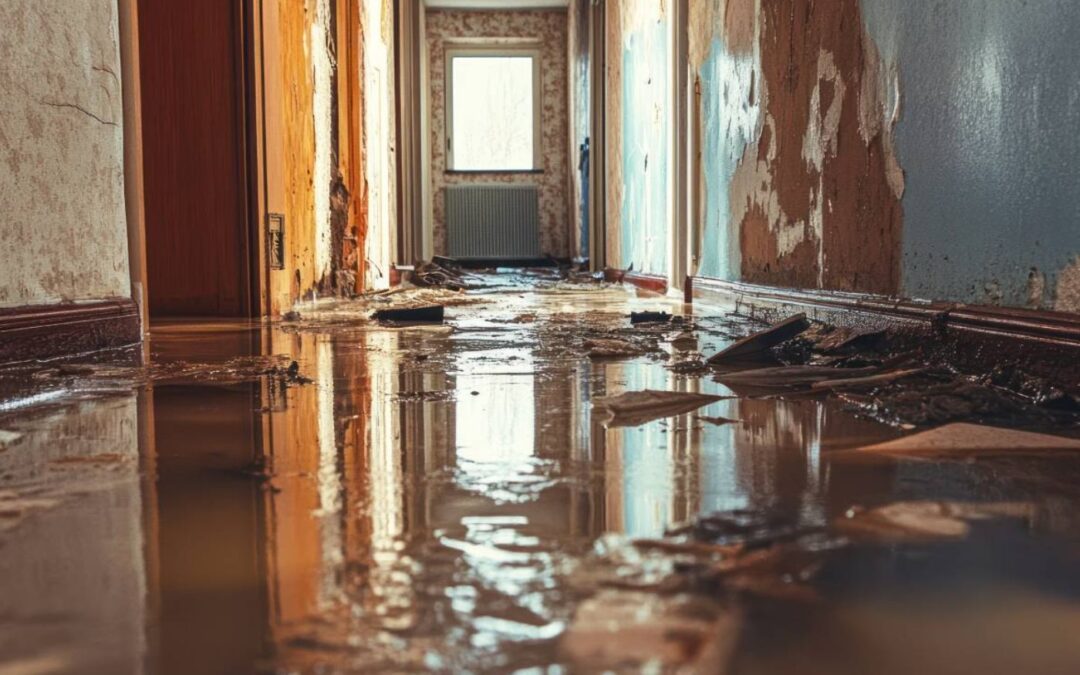
Mold After Water Damage: How to Detect, Remove, and Prevent It
Water damage can lead to many problems, but one of the most concerning is mold growth. Mold thrives in damp, humid environments, making water-damaged areas an ideal breeding ground. If not addressed quickly, mold can spread, causing health issues and further damage to your property.
In this blog, we’ll cover how to detect, remove, and prevent mold after water damage. Let’s begin!
Why Mold Grows After Water Damage
Mold spores are naturally present in the air, but they need moisture to grow. When water damage occurs—whether from flooding, leaks, or burst pipes—surfaces can become saturated, creating a perfect environment for mold. If not treated, mold can start growing within 24-48 hours after water exposure.
How to Detect Mold After Water Damage
Detecting mold early is crucial to prevent it from spreading. Here are some signs to look out for:
1. Visible Spots
Mold often appears as black, green, or white spots on walls, ceilings, and floors. Depending on the severity, it can be patchy or spread out.
2. Musty Odor
A persistent, earthy smell is a common indicator of mold, even if it’s not visible. The odor is often most noticeable in enclosed areas, such as basements, attics, and behind walls.
3. Peeling Paint or Wallpaper
Mold can cause paint or wallpaper to bubble, peel, or warp as it pushes through the surface. This often indicates that the wall underneath has been exposed to moisture.
4. Health Symptoms
Mold exposure can lead to respiratory problems, such as coughing, sneezing, itchy eyes, and asthma attacks. If these symptoms worsen at home, mold could be the culprit.
Steps to Remove Mold After Water Damage
If you detect mold, it’s essential to act quickly to prevent it from spreading. Here’s what you should do:
1. Assess the Damage
Determine the extent of the mold growth. Homeowners can sometimes treat small, localized areas (less than 10 square feet), but larger infestations often require professional help.
2. Wear Protective Gear
Mold removal can release spores into the air, so it’s essential to protect yourself. Wear gloves, goggles, and an N95 mask to minimize exposure.
3. Remove Contaminated Materials
Any porous materials with mold growth, such as carpets, drywall, and insulation, should be removed and discarded. Non-porous materials like glass, metal, and plastic can often be cleaned and salvaged.
4. Clean and Disinfect Affected Areas
Clean the affected surfaces with a mold-killing solution, such as a mix of water and vinegar or a commercial mold remover. Scrub thoroughly and let the area dry completely.
5. Dry the Area Completely
Use fans, dehumidifiers, and open windows to dry the space quickly. Mold thrives in moisture, so eliminating humidity is key to preventing regrowth.
6. Hire a Professional If Needed
It’s best to hire a licensed mold remediation specialist for severe mold infestations. They have the tools, training, and expertise to handle large-scale mold removal safely and effectively.
Preventing Mold After Water Damage
The best way to deal with mold is to prevent it from growing in the first place. Here are some proactive steps to take:
1. Address Water Damage Immediately
The longer water damage is left untreated, the more likely mold will develop. Dry and repair the area immediately if you experience a flood or leak.
2. Control Humidity Levels
To prevent mold growth, keep indoor humidity below 60%. Use dehumidifiers in humid areas, such as basements, and ensure proper ventilation in bathrooms and kitchens.
3. Fix Leaks and Drips
Regularly inspect your plumbing for leaks and repair them promptly. Check roofs, windows, and gutters to ensure no issues could lead to water intrusion.
4. Improve Air Circulation
Good airflow helps keep moisture levels down. Open windows, use fans and ensure your HVAC system functions correctly.
5. Use Mold-Resistant Products
Consider using mold-resistant drywall, paint, and insulation when repairing or renovating. These materials are designed to minimize the risk of mold growth.
Conclusion
Mold after water damage can be a serious issue, but it can be managed effectively with quick action and the right approach. You can keep your home safe and healthy by detecting mold early, taking proper steps to remove it, and preventing it from returning. If you’re facing a severe mold problem, don’t hesitate to contact a professional restoration service to ensure the job is done right.
Dealing with mold? Contact us today for expert water damage and mold remediation services!
Consider HTX Restoration for Water Damage Restoration Services In Houston, TX
If you’re looking for high-quality, cost-effective damage restoration or other home restoration/remodeling services in Houston, Texas, you can contact HTX Restoration for a free estimate! Our experts have decades of experience with all kinds of home restoration projects. We can ensure that we provide high-quality service at competitive prices.


Recent Comments